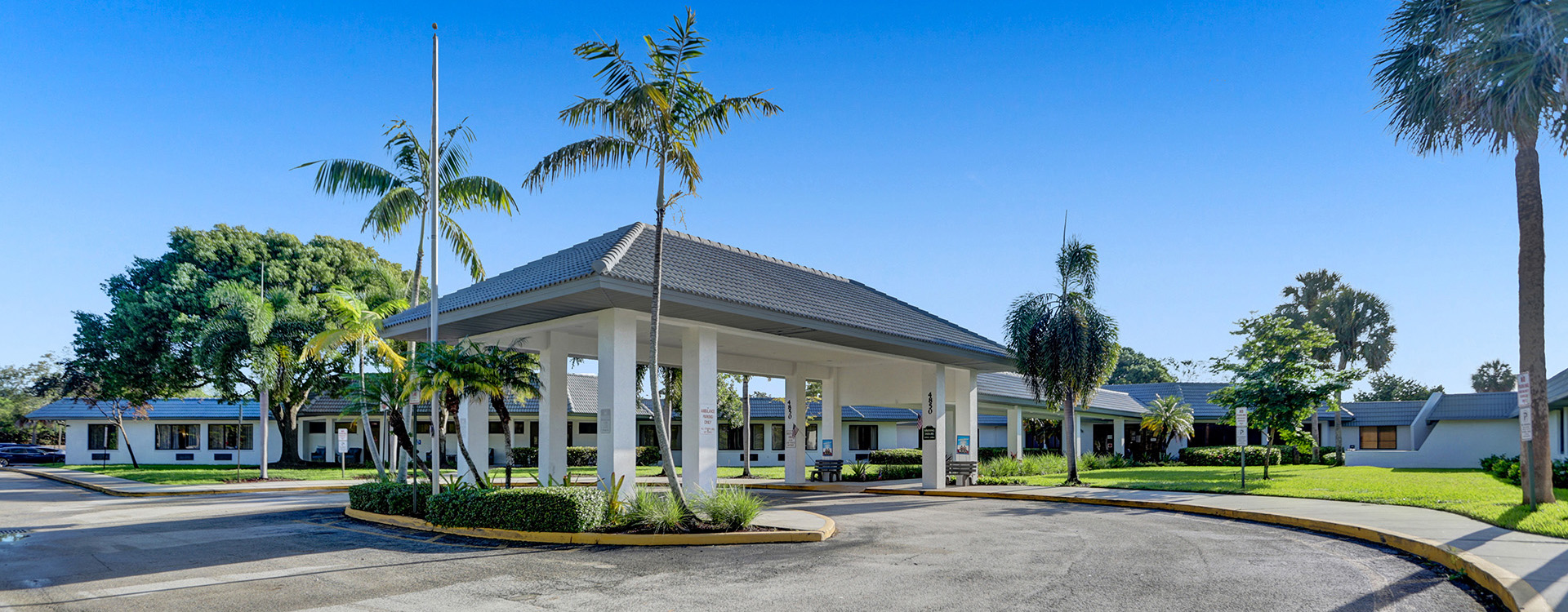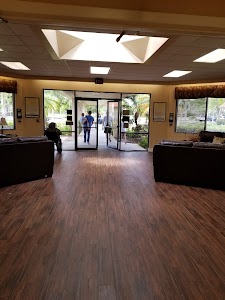Compliance & Policies
Compliance and Ethics Officer: Brandy Rogers – 855-585-1011
Visitation PolicyThis facility will allow visitation of all visitors and non-essential health care personnel and can be conducted through different means based on the facility’s structure and residents’ needs, such as in resident rooms, dedicated visitation spaces, and outdoors. The visitation will be person-centered, consider the resident’s physical, mental, and psychosocial well-being, and support their quality of life. Exceptions will be in accordance with current CMS directives and CDC recommendations, or as directed by state government (whichever is more stringent).
Policy Explanation and Compliance Guidelines:
- The Infection Preventionist/designee will monitor the status of the COVID-19 situation through the CDC website and local/state health department, and will keep facility leadership informed of current directives/recommendations and the need for restricting visitation if indicated.
- The facility will communicate this visitation policy through multiple channels. Examples include signage, calls, letters, social media posts, emails, and recorded messages for receiving calls.
- Non-essential staff, as designated in emergency preparedness plans, will be notified through routine and emergency communication procedures for staff.
- The core principles of COVID-19 infection prevention will be adhered to and as follows:
- The facility will provide guidance (e.g., posted signs at entrances) about recommended actions for visitor who have a positive viral test for COVID-19, symptoms of COVID-19, or have had close contact with someone with COVID-19.
- Visitors with confirmed COVID-19 infection or compatible symptoms should defer non-urgent in-person visitation until they meet CDC criteria for healthcare settings to end isolation.
- For visitors who have had close contact with someone with COVID-19 infection, it is safest to defer non-urgent in-person visitation until 10 days after their close contact if they meet criteria described in CDC healthcare guidance (e.g., cannot wear source control).
- Visitors will be counseled about their potential to be exposed to COVID-19 in the facility.
- Hand hygiene, using an alcohol-based hand rub, will be performed by the resident and the visitors before and after contact.
- A face covering or mask (covering the mouth and nose) in accordance with CDC guidance.
- Instructional signage throughout the facility and proper visitor education on COVID-19 signs and symptoms, infection control precautions, and other applicable facility practices will be conducted.
- Cleaning and disinfection of highly touched surfaces in the facility and in designated visitation areas after each visit will be performed.
- Staff will adhere to the appropriate use of personal protective equipment (PPE).
- The facility will utilize effective strategies of cohorting residents (e.g., separate areas dedicated to COVID-19 care).
- The facility will conduct resident and staff testing as per current CMS/CDC guidance.
- Physical barriers such as clear Plexiglass dividers or curtains will also be used to reduce the risk of transmission as permitted.
- Visitors who are unable to adhere to these principles of COVID-19 infection prevention will not be permitted to visit or will be asked to leave.
- Outdoor visitation will be conducted in a manner that reduces the risk of COVID-19 transmission as follows:
- Visits will be held outdoors whenever practicable and will be facilitated routinely barring weather conditions or a resident’s health status.
- The facility will have an accessible and safe outdoor space (designate space) in which to conduct outdoor visitation.
- All appropriate infection control and prevention practices will be followed when conducting outdoor visitations.
- Indoor visitation will be conducted in a manner that reduces the risk of COVID-19 transmission based on the following guidelines:
- The facility will allow indoor visitation at all times and for all residents and will not limit the frequency and length of visits, the number of visitors, or require advance scheduling of visits.
- Visits will be conducted in a manner that adheres to the core principles of COVID-19 infection prevention and does not increase risk to other residents.
- Physical distancing should be encouraged during peak times of visitation and large gatherings (e.g., parties, events).
- If the facility’s county COVID-19 community transmission is high, everyone in a healthcare setting should wear face coverings or masks per the CDC/CMS recommendations.
- If the facility’s county COVID-19 community transmission is not high, the safest practice is for residents and visitors to wear face coverings or masks, however, the facility can choose not to require visitors wear face coverings or masks while in the facility, except during an outbreak. The facility’s policies regarding face coverings and masks will be based on recommendations from the CDC, state and local health departments, and individual facility circumstances.
- Regardless of the community transmission level, resident and their visitors when alone in the resident’s room or in a designated visitation area, may choose not to wear face coverings or masks and may choose to have close contact (including touch). Residents (or their representative) and their visitors should be advised of the risks of physical contact prior to the visit. If a roommate is present during the visit, it is safest for the visitor to wear a face covering or mask.
- For residents who are on transmission-based precautions or quarantine, visits may occur in the resident’s room and the resident should wear a well-fitted facemask (if tolerated). Visitors will be made aware of the potential risk of visiting and precautions necessary in order to visit and should adhere to the core principles of infection prevention.
- When a new case of COVID-19 among staff or residents is identified, the facility will immediately begin an outbreak investigation and adhere to CMS regulations and guidance for COVID-19 testing, including expanded screening testing, testing of individuals with symptoms and outbreak testing. See Coronavirus Testing Policy.
- Visits will be allowed during outbreak investigations, but visitors will be made aware of the potential risk of visiting during the outbreak investigation and adhere to the core principles of infection prevention. If visiting, during this time, residents and their visitors should wear face coverings or masks during the visits, regardless of vaccination status, and visits should ideally occur in the resident’s room. The facility may contact their local health authorities for guidance or direction on how to structure their visitation to reduce the risk of COVID-19 transmission during an outbreak investigation.
- While an outbreak investigation is occurring, the facility will limit visitor movement in the facility and visitors should go directly to the resident’s room or designated visitation area and physically distance themselves from other residents and staff, when possible.
- Visitors will be notified about the potential for COVID-19 exposure in the facility (e.g. appropriate signage regarding current outbreaks), and adhere to the core principles of COVID-19 infection and prevention, including effective hand hygiene and use of face coverings.
- Compassionate care visits will be allowed at all times.
- Visits required under the federal disability rights laws and protection and advocacy (P & A) programs will be allowed at all times. If the resident is in transmission-based precautions or quarantine and is in a county where the level of community transmission is substantial or high in the past 7 days, the resident and P & A representative should be made aware of the potential risk of visiting and the visit should take place in the resident’s room.
- Ombudsmen who plan to visit a resident in transmission-based precautions or quarantine in the facility in a county where the level of community transmission is high in the past 7 days, the ombudsman and resident, will be made aware of the potential risk of visiting and the visit should take place in the resident’s room.
- Alternative communication methods (phone or other technology) may be used if the resident or Ombudsman program requests it in lieu of an in-person visit.
- Visitor testing may be offered, if feasible, in facilities in counties with high levels of community transmission. If the facility does not offer testing, the facility should encourage visitors to be tested on their own before coming to the facility (e.g., within 2-3 days).
- The facility may ask about a visitor’s vaccination status, however, visitors will not be required to be tested or vaccinated (or show proof of such) as a condition of visitation. If the visitor declines to disclose their vaccination status, the visitor should wear a face covering or mask at all times.
- All healthcare workers will be permitted to come into the facility as long as they are not subject to a work exclusion or showing signs or symptoms of COVID-19. This includes personnel educating and assisting in resident transitions to the community.
- Communal activities (including group activities, communal dining, and resident outings):
- Communal activities and dining may occur while adhering to the core principles of COVID-19 infection prevention. The safest approach is for everyone, particularly those at high risk for severe illness, to wear a face covering or mask while in the communal areas of the facility.
- Communal activities and dining do not have to be paused during an outbreak, unless directed by the state or local health department. Residents who are on transmission-based precautions should not participate in communal activities and dining until the criteria to discontinue transmission-based precautions has been met.
- Residents are permitted to leave the facility as they choose. The facility will remind the resident and any individual accompanying the resident to follow all recommended infection prevention practices such as wearing a face covering or mask, especially for those at high risk for severe illness and when community transmission is high, performing hand hygiene and to encourage those around them to do the same.
- Upon the resident’s return, the facility should take the following actions:
- Screen residents upon return for signs or symptoms of COVID-19.
- If the resident or family member reports possible close contact to an individual with COVID-19 while outside the nursing home, the facility will follow the current CDC guidance in regards to testing and quarantine.
- If the resident develops signs or symptoms of COVID-19 after the outing, the facility will follow the current CDC guidance for residents with symptoms of COVID-19.
- Screen residents upon return for signs or symptoms of COVID-19.
- In most circumstances, quarantine is not recommended for residents who leave the facility for less than 24 hours (e.g., for medical appointments, community outings with family or friends) except in certain situations as per the current CDC empiric transmission-based precaution guidance.
- The facility will monitor residents for signs and symptoms of COVID-19 daily.
- Residents who leave the facility for 24 hours or longer should be managed as a new admission or readmission and follow current CDC guidance.
References:
Centers for Disease Control and Prevention. Interim Infection Prevention and Control Recommendations for Healthcare Personnel During the Coronavirus Disease 2019 (COVID-19) Pandemic. Located at: https://www.cdc.gov/coronavirus/2019-ncov/hcp/infection-control-recommendations.html. Accessed September 23, 2022.
Centers for Medicare and Medicaid Services. Nursing Home Visitation Frequently Asked Questions (FAQs). September 23, 2022.
Centers for Medicare & Medicaid Services. (September 23, 2022) QSO-20-39-NH: Nursing Home Visitation-COVID-19 (REVISED).
Our goal for this website is to provide information and access to services to all visitors. We understand that not everyone experiences web content the same way. Some have impaired vision, hearing, ability to use a mouse, or other disability. As part of our commitment to universal access, we make it a priority to take these differences into account by organizing our site and presenting our content in ways that are usable by visitors with disabilities and the assistive technologies they rely on.
This serves a diverse population and respects the rights of all residents to receive culturally competent care. The Facility and its Associates recognize that each resident is an individual with personal dignity and unique healthcare needs and strive to provide care focused upon the resident’s needs.
- The Facility will not exclude, deny benefits to, or otherwise discriminate against persons who are residents or desiring to be admitted to the Facility, in accordance with federal and state statutes and regulations. The Facility does not discriminate on the basis of race, color, national origin, sex, age, or disability, and no resident shall be denied admission or appropriate care and placement following admission because of race, creed, color, national origin, ancestry, age, sex, handicap, disability, or any other category prohibited by applicable federal, state, or local laws and regulations.
- Appropriate auxiliary aids and services are available pursuant to the Facility’s Auxiliary Aids and Services Policy and Procedure.
- Language assistance services are available pursuant to the Facility’s Residents and Families with Limited English Proficiency Policy and Procedure.
- Residents and their families are entitled to the prompt resolution of medical and non-medical grievances pursuant to the Facility’s Grievance Policy and Procedure.
- The Facility shall provide information to individuals on how to file a complaint with the United States Office of Civil Rights.
The Compliance and Ethics Officer is responsible for coordinating or facilitating the items listed above as well as any additional Facility nondiscrimination policies.
The Agency for Health Care Administration (AHCA) and Florida Department of Health (DOH) have published emergency rules to establish the standards for the appropriate use of facial coverings for infection control in health care settings, including nursing centers and assisted living facilities. The content of the rules is the same, with the AHCA rules applying to health care providers and the DOH rules applying to health care practitioners. The AHCA rules, 59AER23-1 and 59AER23-2, became effective on June 30, 2023.
The rules are in response to a legislative directive to AHCA and DOH within SB 252, which was signed by the governor on May 11, 2023. SB 252 consolidates issues relating to COVID-19 and prohibits businesses, government and educational entities from requiring a person to wear a facial covering to gain entry to, or use, their services. However, the legislation recognizes instances where masking is clinically appropriate in health care settings and directs AHCA and DOH to adopt emergency rules establishing standards by July 1, 2023, in newly created s. 408.824,F.S.
As directed in s. 408.824, F.S.:
- Providers must adopt facial covering policies in compliance with the standards by August 1, 2023.
- The policies must be posted on the provider’s website or conspicuously displayed in the lobby of the facility.
- After August 1, any provider that requires the wearing of a facial covering in violation of the standards or has not posted compliant policies is subject to disciplinary action.


